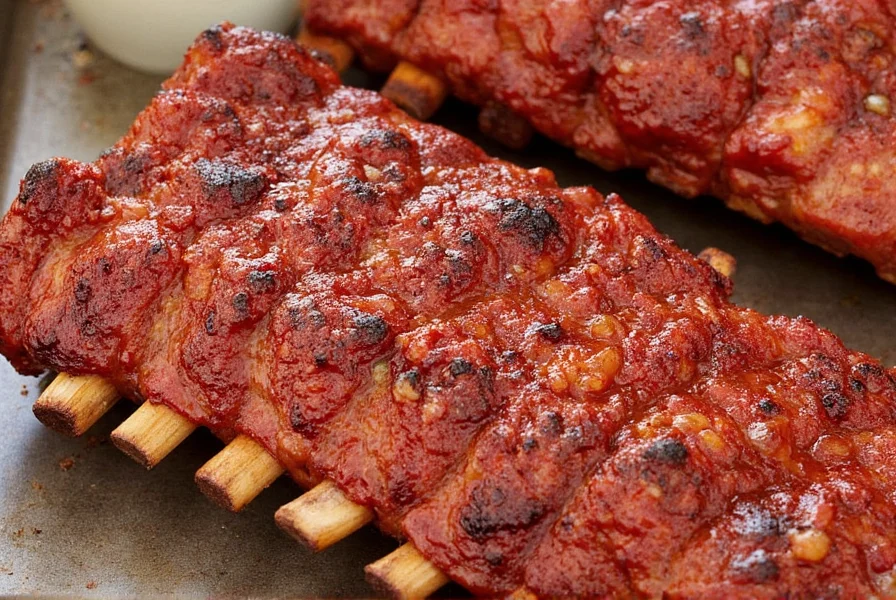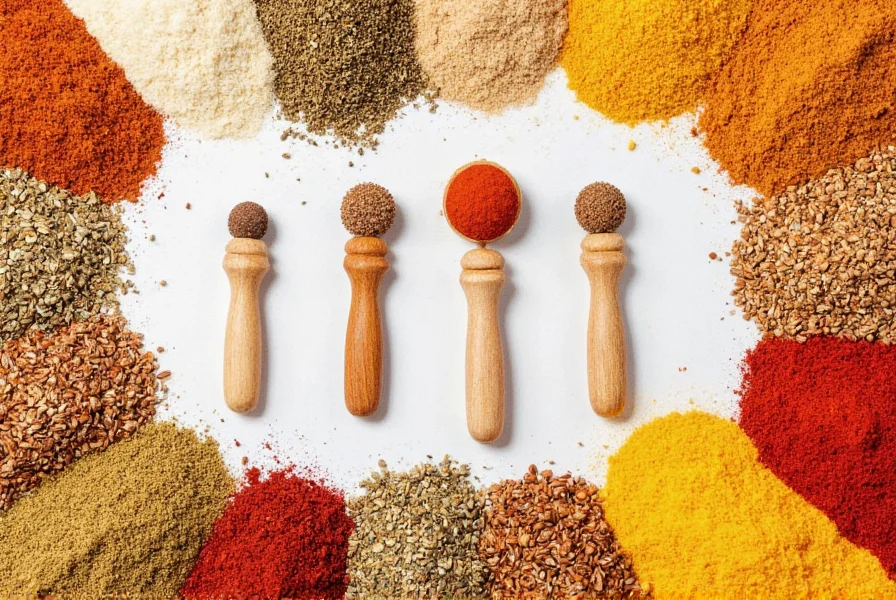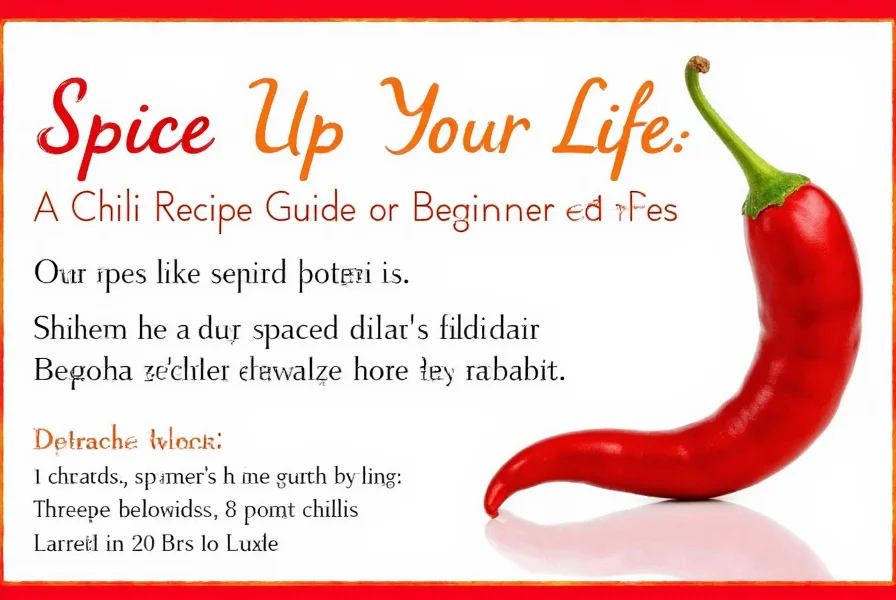Table of Contents
Introduction to Making Perfect Chili
Making the perfect chili is an art that combines the right ingredients, techniques, and patience. Whether you're a beginner or a seasoned cook, understanding the fundamentals of chili preparation will transform your cooking experience. This guide covers everything from selecting the best chilies to mastering flavor balance, helping you create consistently delicious results.

Understanding Different Types of Chilies
Not all chilies are created equal. Each variety brings its own unique flavor profile, heat level, and texture to the table. Here's a quick breakdown of some popular types:
| Chili Type | Heat Level (Scoville) | Flavor Profile | Best For |
|---|---|---|---|
| Jalapeño | 2,500–8,000 | Mild, slightly sweet, tangy | Snacks, salsas, stuffed peppers |
| Serrano | 10,000–23,000 | Sharp, peppery, bright | Hot sauces, salsas, pickling |
| Chipotle | 2,500–8,000 | Smoky, earthy, slightly sweet | Stews, braises, grilled dishes |
| Habanero | 100,000–350,000 | Peppery, fruity, citrusy | Hot sauces, tropical dishes, marinades |
| Ghost Pepper | 850,000–1,040,000 | Extremely hot, sweet, floral | Extreme chili challenges, specialty dishes |
Knowing which chili to use depends on the desired outcome. If you're making a classic chili, jalapeños and serranos are great starting points. For a smokier, deeper flavor, chipotles or ancho chilies are perfect.
Essential Spices for Chili
While chilies are the star of the show, they need the right supporting cast to shine. Here are the essential spices that make a chili recipe unforgettable:
- Cumin: Adds warmth and earthiness
- Oregano: Provides a fresh, herbal note
- Garlic: Enhances depth and umami
- Onion: Adds sweetness and structure
- Tomato Paste: Boosts richness and color
- Black Pepper: Balances heat and adds complexity
- Smoked Paprika: Offers a deep, smoky flavor
- Bay Leaves: Infuses subtle fragrance and aroma
These spices work together to create layers of flavor that complement the heat from the chilies. The key is to balance them so that no single element overpowers the others.
Top Tips for Making the Best Chili
Whether you're new to chili or a seasoned pro, these tips will help you master the art of chili-making:
- Start with quality ingredients: Fresh chilies, good meat, and high-quality spices make a world of difference.
- Use a cast-iron pot: It distributes heat evenly and enhances the flavor.
- Don't rush the process: Letting the chili simmer allows flavors to develop fully.
- Add liquid gradually: This helps control consistency and prevents the chili from becoming too watery.
- Toast your spices: Sautéing cumin, oregano, and garlic before adding liquids intensifies their flavor.
- Experiment with textures: Some people like chunky chili, while others prefer smooth. Adjust based on preference.
- Balance the heat: Use mild chilies if you want a milder dish, or add a dash of vinegar to cut through the spiciness.
- Let it rest: Allowing the chili to sit for 15–30 minutes before serving lets the flavors settle and deepen.
- Try different proteins: While beef is classic, chicken, turkey, or even lentils can be excellent substitutes.
- Get creative with toppings: Avocado, cheese, sour cream, and cilantro can elevate the dish to the next level.
With these tips, you'll be well on your way to creating a chili recipe that's both delicious and satisfying.
Buying Guide for Chili and Spice Essentials
Picking the right chilies and spices is crucial to making a great chili. Here's a guide to help you choose wisely:
Chilies
- Jalapeño: Great for beginners. Look for firm, glossy peppers without blemishes.
- Serrano: Slightly hotter than jalapeños. Choose plump and shiny ones.
- Chipotle: Smoked and dried. Available in cans or as powder.
- Ancho: Mildly sweet and smoky. Ideal for sauces and stews.
- Habanero: Very hot. Handle with care and use sparingly.
Spices
- Cumin: Choose whole seeds for better flavor, or pre-ground if convenience is a priority.
- Oregano: Dried oregano works best in chili. Fresh can be used for garnish.
- Smoked Paprika: Adds depth. Look for Spanish or Hungarian varieties.
- Garlic Powder: A time-saver for busy cooks.
- Black Pepper: Freshly ground is always better.
If you're using store-bought chili powder, check the label to ensure it includes cumin, oregano, and other essential spices. Some blends may lack flavor or have too much salt.
A chili recipe isn't complete without the right tools. A good knife, cutting board, and a heavy-bottomed pot are must-haves. For those who love experimenting, a spice grinder or mortar and pestle can be invaluable.
Frequently Asked Questions About Chili Making
What is the difference between chili and chilli?
Both spellings are correct, though "chili" is more common in American English while "chilli" is often used in British English. The word refers to both the pepper and the dish.
How can I make my chili less spicy if I added too much heat?
If your chili is too spicy, try adding dairy products like sour cream or yogurt, which contain casein that helps neutralize capsaicin (the compound that makes chilies hot). You can also add more tomatoes, beans, or meat to dilute the heat, or a touch of sugar or honey to balance the spiciness.
How long should I let my chili simmer for the best flavor?
For optimal flavor development, let your chili simmer for at least 30-60 minutes. Many chili enthusiasts believe that chili tastes even better the next day after the flavors have had time to meld together. Slow cooking for 2-4 hours on low heat allows the flavors to fully develop and the meat to become tender.
Can I make chili without meat?
Absolutely! You can make delicious vegetarian or vegan chili using beans, lentils, mushrooms, or textured vegetable protein as the base. Many traditional chili recipes from Texas actually don't include beans, while other regional variations do. Feel free to experiment with different plant-based proteins to create a hearty meatless chili.
What are the essential ingredients for a classic chili recipe?
The essential ingredients for a classic chili include: meat (usually beef), chilies (fresh or dried), onions, garlic, cumin, oregano, and tomatoes or tomato paste. Some recipes also include beans, while others (particularly in Texas-style chili) do not. The specific combination and proportions vary by regional tradition and personal preference.
How can I thicken my chili if it's too watery?
If your chili is too thin, you have several options: 1) Simmer it uncovered to allow excess liquid to evaporate, 2) Mix a tablespoon of cornstarch with cold water and stir it into the chili, 3) Mash some of the beans or vegetables in the chili to release their starches, or 4) Add a small amount of masa harina (corn flour), which is traditional in many chili recipes and adds authentic flavor.
Can I freeze chili for later use?
Yes, chili freezes exceptionally well. Store it in airtight containers or freezer bags, leaving about an inch of space for expansion. Properly stored, chili can maintain its quality in the freezer for 4-6 months. When ready to eat, thaw overnight in the refrigerator and reheat on the stove, adding a little water or broth if needed.
What's the best way to store leftover chili?
Store leftover chili in an airtight container in the refrigerator for up to 3-4 days. For longer storage, freeze it as mentioned above. When reheating, do so gently on the stove, stirring occasionally and adding a small amount of liquid if it has thickened too much in storage.
Conclusion
Making the perfect chili is about balance—between heat and flavor, tradition and creativity. With the right knowledge, tools, and ingredients, anyone can create a delicious and satisfying dish that brings people together.
Remember that the journey to great chili is as important as the final result. Experiment with different ingredients, trust your palate, and most importantly, enjoy the process of creating something truly special.













 浙公网安备
33010002000092号
浙公网安备
33010002000092号 浙B2-20120091-4
浙B2-20120091-4